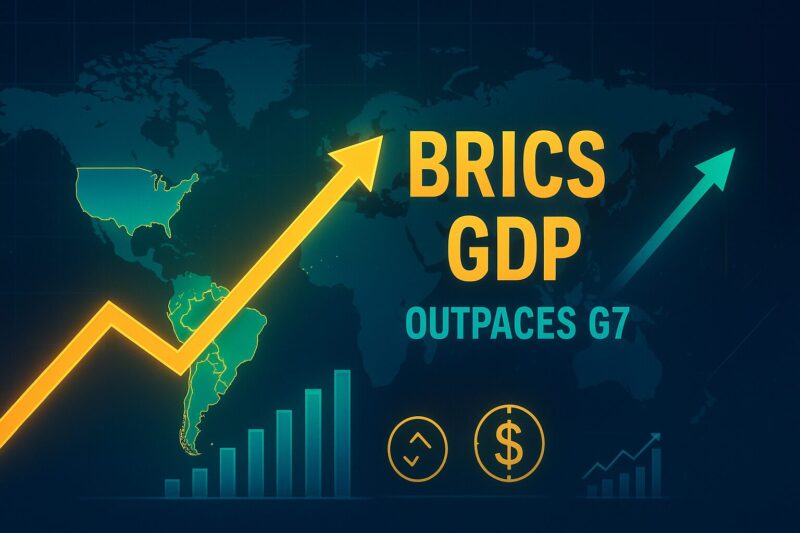BRICS GDP growth is racing ahead of developed economies right now, and the numbers tell quite a story. The bloc is projected to expand 3.8% in 2025 compared to just 1% for G7 countries, which represents more than three times faster growth. This kind of emerging market expansion signals a fundamental shift in the global economy, as the BRICS economy builds momentum through trade, investment, and also demographic advantages, while the G7 economic slowdown continues to affect traditional Western powers.
Also Read: BRICS Challenges SWIFT: Bloc Builds Its Own Cross-Border Payment System
BRICS GDP Growth Surges While G7 Economic Slowdown Sparks Concern


India and China Drive the BRICS Economy Forward
According to IMF forecasts, BRICS GDP growth is expected to average 3.8% in 2025 and 3.7% in 2026. India is leading this emerging market expansion with 6.6% growth projected for 2025, followed by 6.2% in 2026. China, along with its strengthening trade relationships across Asia, Europe, and Africa, is forecast at 4.8% growth in 2025. These figures are being driven by significant investment and trade flows. These are reshaping how the global economic shift is unfolding at the time of writing.


The contrast with the G7 economic slowdown is quite striking. Average growth across G7 countries is expected to reach just 1% in 2025 and 1.2% in 2026. The BRICS economy now accounts for 40% of the global economy when measured by Purchasing Power Parity. Even more, projections show this rising to 41% in 2025.
Structural Problems Weigh on G7 Nations
Germany really exemplifies the challenges facing developed nations right now. The country’s GDP growth is projected at just 0.2% in 2025, which makes it one of the slowest rates in the world. Aging populations and trade uncertainty are constraining what was once robust emerging market expansion in Western economies. Some improvement is expected in 2026. Germany’s economy is forecasted to grow by 0.9%. Also, this trend is being mirrored in several other G7 nations as well.
The difference in BRICS GDP growth compared to the G7 reflects deeper structural factors. Rodrigo Cezar, who is a professor of International Relations at the Getulio Vargas Foundation and a specialist in international political economy, explained the dynamics:
“It is important to talk here about heterogeneity, an internal difference in the BRICS countries. This creates challenges and opportunities. In the case of Brasil and India, for example, the fact that they are further away from the frontlines of geopolitical instability creates an opportunity linked to the detour of trade.”
He also added that the size of the countries and their trade characteristics mean that the BRICS has a “greater capacity to absorb some external shocks.”
Summit Highlights the Global Economic Shift
At the 17th BRICS Summit in Rio de Janeiro this July, the global economic shift became even more apparent as member nations adopted a Joint Declaration covering 126 commitments. These span areas such as global governance, finance, climate, health, and technology. The summit actually attracted renewed interest from Latin America and other regions looking for alternatives to Western-dominated systems.
Brazilian President Luiz Inacio Lula da Silva made the bloc’s intentions clear when he stated:
“In the face of the resurgence of protectionism, it is up to emerging nations to defend the multilateral trading regime and reform the international financial architecture.”
Also Read: Russia Supports A New Country To Join BRICS
Cezar provided additional context on what this means for the future:
“It is important economically, but also politically, because it is a counterpoint to the hegemony of the United States. It is an actor that shows an alternative to the G7 – the most developed countries in the European Union and North America.”
The BRICS nations now represent half of the world’s population, with their sustained BRICS GDP growth continuing to reshape the balance of power. As this emerging market expansion accelerates and the G7 economic slowdown persists, the global economic shift appears to be entering a new phase. This could define international trade and governance for years to come.





